History of spread of Iron pickup Coffee Bean varieties difference in flavor and taste of hand-made flavor of Lanshan coffee varieties treated by washing and sunburn
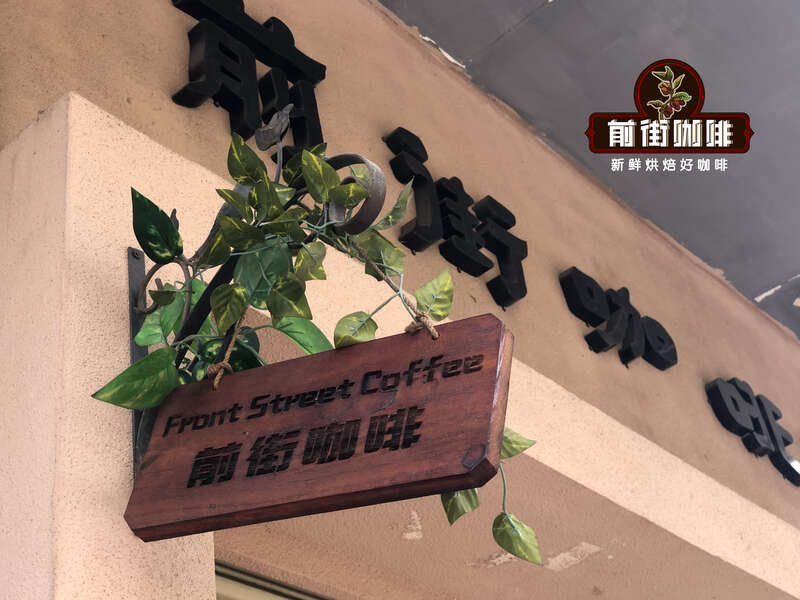
Professional coffee knowledge exchange more coffee bean information please follow the coffee workshop (Wechat official account cafe_style)
Now the global production of Arabica coffee beans accounts for 70%. As the ancient iron pickup of Arabica coffee beans, it has spread from its hometown of Ethiopia to all parts of the world to create the development of coffee producing countries in the world. How did it spread to the whole world? How is the iron pickup planted? In the front street, this article will talk about the spread history of iron pickup coffee and how iron pickup has grown from a coffee bean to a coffee tree. Varieties of iron pickup coffee beans
Typica is a sub-variety of Arabica coffee, which was originally grown in Martinique Island, Central America, Jamaica, Kona region of Hawaii, Papua New Guinea and East Timor are the main coffee growing places of Tibica. In order to obtain more coffee production from high-quality iron cards, Ironpika coffee varieties usually interbreed with other species.
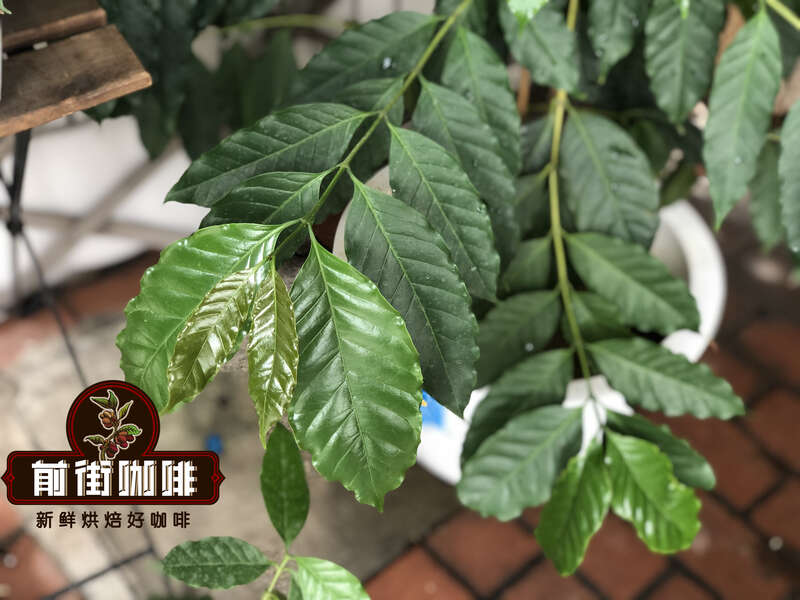
The characteristics of the iron pickup tree species have distinct characteristics, and it may be the most easily identified species. These plants are conical, with main vertical trunks up to 5 meters high. This height means that the distance between branches and nodes on the same branch is longer than that of other varieties. The lateral branches form an angle of 50 to 80 °with the vertical trunk. The trunk and branches are not very strong, the leaves, fruits and beans are usually slender, and the bud tips of the tender leaves are bronze. Compared with other Arabica varieties, Typica has a smoother leaf surface and fewer wavy boundaries, and the typical tin pickup fruit is bright red when ripe.
The bronze color of the top leaf of the iron pickup is one of the characteristics. The bean grain is large, pointed, oval or thin, and some people call it "red top coffee". But the only drawback is that the yield is insufficient, there is a requirement for altitude, and it is easy to be infected with leaf rust. And resistance to diseases and insect pests is not strong. Qianjie coffee through the cup of iron pickup coffee has its unique quiet and clean flavor, as well as balanced features, high taste cleanliness. The hometown of Arabica Coffee-Ethiopia: the name of Arabica (Arabica) is easy to mislead people into thinking that its hometown is Arabian Peninsula, but it actually originated in Ethiopia. The reason why it is called Arabica, it is completely the key geographical location of the Arabian Peninsula, this place links the three continents of Asia, Europe and Africa, and it was the gathering place of the world's cultural exchanges before the era of great navigation. Until 1753, botanist Linai mistakenly thought the coffee originated in the Middle East and gave it the scientific name Coffea arabica L. In 2002, an European-funded coffee genetic material research project found that coffee genetic diversity in places such as Yemen was much lower than that in Ethiopia, which "helped" Arabica find its hometown. The first stop of the spread of iron pickup in Yemen: coffee was first introduced into the Arabian Peninsula as a drug treatment. After centuries of "rooting on the ground", around 1500, the ports of Mocha and Aden in Yemen sprang up to drink with sun-dried coffee pulp, which became "Kashi", and later developed into ground and boiled coffee beans roasted with pulp and cinnamon, known as "Kawa".
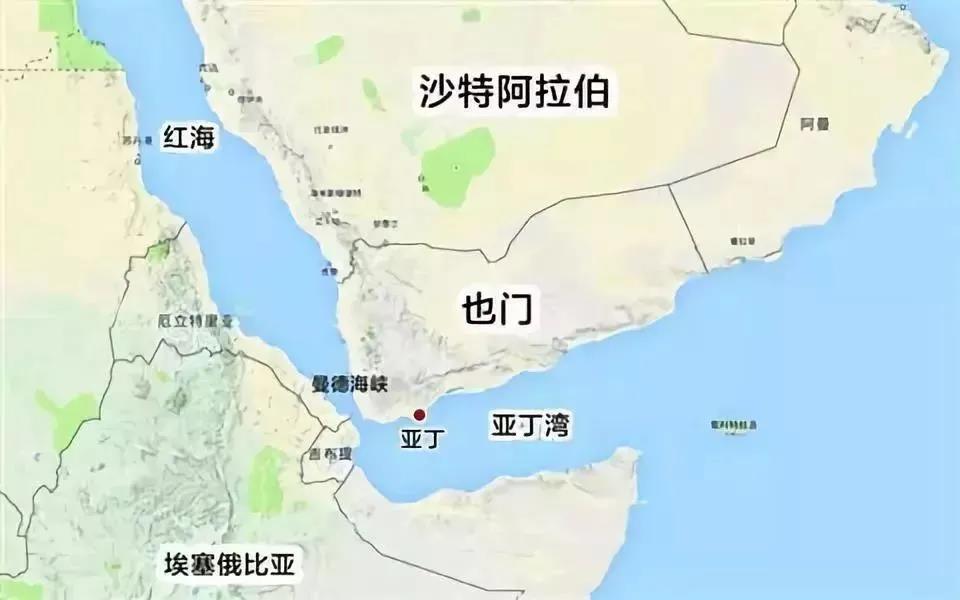
The second stop for the spread of iron pickups-India: around 1600, an Indian devout Islamist Babudan went on a pilgrimage to Mecca and became infatuated with coffee and tried to illegally smuggle raw beans back to India, stealing seven Yemeni iron pickup coffee seeds. back to Karnataka province in southwestern India, and planted in the Gandjili Mountains to successfully breed, this is the first successful case in history of smuggling raw coffee beans in Yemen to other places.
The third stop for the spread of iron pickups-Europe: around the 17th century, the Yemeni port of Mocha became a world-famous coffee export port, and at that time, in order to prevent coffee seeds from falling into other places to grow, the coffee was exported with roasted ripe beans, so coffee is also called black gold. When coffee and coffee were introduced into Europe in the 17th century, the Netherlands, as a "sea coachman", smelled a huge business opportunity. It can be said that whoever owns coffee is equal to gold.
In the early 17th century, Europeans, led by the Netherlands, seized coffee saplings in Yemen illegally or by force, but the cold climate of Europe made it impossible for even stolen coffee saplings to survive and wither. It was not until 1616 that de Boek, the captain of the Dutch East India Company, stole the coffee tree from Mocha in Yemen, shipped it back to Amsterdam and carefully planted it in a large greenhouse, and finally blossomed. And this iron pickup coffee tree is also known as the "European mother plant". In 1699, the Netherlands successfully transplanted Indian iron pickups to Java and shipped them back to Holland in 1706 for cultivation.
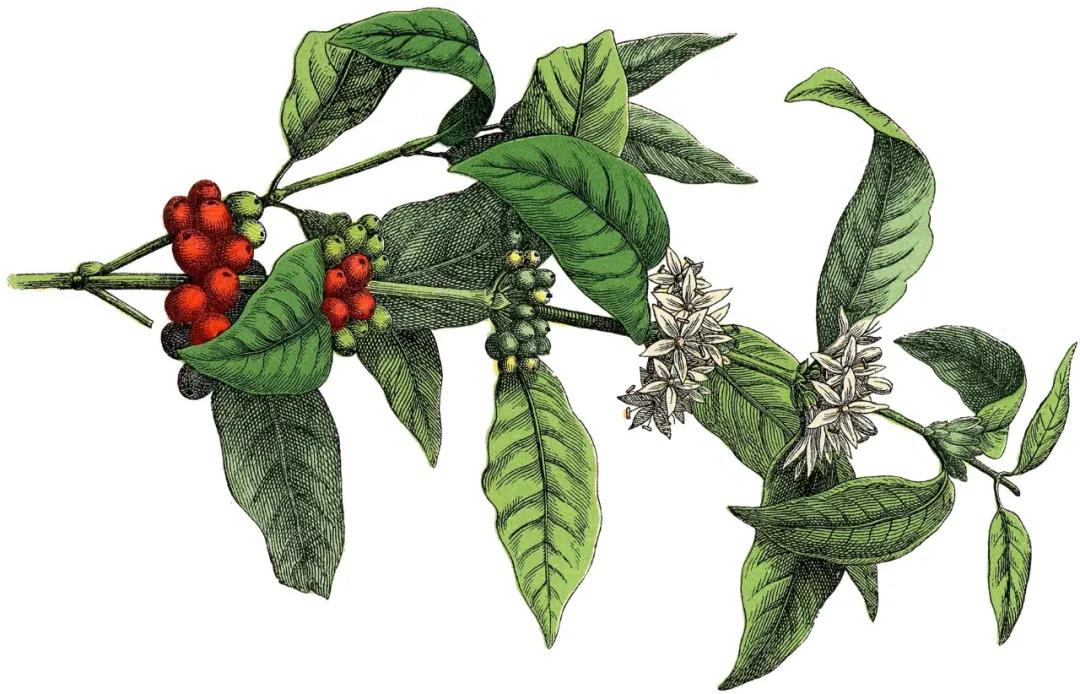
The fourth stop of the spread of iron pickups-Southeast Asia: as early as 1658, the Netherlands transplanted the offspring of the "European mother plant" to Sri Lanka, but the cultivation failed. Then, in 1699, the Netherlands was transplanted to Java from the Malaba coffee tree in eastern India. This trial was successful, and the iron pickup grew steadily in Java. In 1718, the Netherlands transplanted the successful iron pickup from Java to Sumatra and Sulawesi. After more than a century of breeding, when Indonesia's iron pickup was in its heyday, a leaf rust at the end of the 19th century swept most of Indonesia's iron truck, and later had to introduce a more disease-resistant variety, Robusta. The fifth stop of the spread of iron pickup-Central and South America: coffee trees stolen by France from Mocha failed in Dijon in 1708. In 1714, the mayor of Amsterdam presented Java coffee saplings to King Louis XIV of France, and France also set up a greenhouse to take good care of the only sapling. The offspring of this mother plant were transplanted to the French dependency of Central and South America from 1715 to 1719, but none of them succeeded.
In 1720, a naval officer named Dikru stole an iron pickup tree from the Royal Botanical Gardens in Paris and escorted it all the way to the West. He finally arrived on the French island of Martinique in the Caribbean in 1723 and carefully planted the only coffee seedling. Three years later, the "European mother plant" was fruitful, and 19 million iron pickups were planted on Martinique Island until 1777. And Jamaica, Colombia, Guatemala, Costa Rica, Venezuela and other countries in Central and South America also introduced the iron pickup coffee tree in the middle and late 18th century, and the iron pickup took root in Central and South America.
The sixth stop of iron pickup-a trip in the 19th century: in 1825, Hawaii introduced Guatemalan improved iron pickup coffee and planted it in the Kona region, which became today's famous island coffee-Kona coffee. In 1904, French missionary Father Tian Deneng went to Dali to preach and planted an iron pickup coffee tree in the village of Zhugula. This coffee tree also became the ancestor of Yunnan coffee.
After understanding the spread history of Iron pickup Coffee, follow Qianjie Coffee to learn about the growth process of Iron pickup Coffee.
Qianjie has been growing iron pickup coffee beans on the border between Yunnan and Myanmar in recent years, in order to improve the quality of Yunnan coffee by changing the existing varieties in Yunnan. Next, follow Qianjie to learn about the process from a coffee bean to a coffee tree.
Seed selection: we should start with a coffee seed. Coffee seeds are "coffee beans". It is necessary to select high-quality varieties and beans. Varieties refer to tin pickup, bourbon and other varieties. Qianjie believes that high-quality varieties can produce high-quality coffee, while high-quality beans refer to quality. Qianjie believes that the selected breeding fruit must be fully mature and have a normal shape. Full and full, basically the same size. If it needs to be stored for a short time, the seed water content should be reduced to 13%. The germination rate can reach 100% within 1-3 months, while the germination rate from April to July is only 29%.
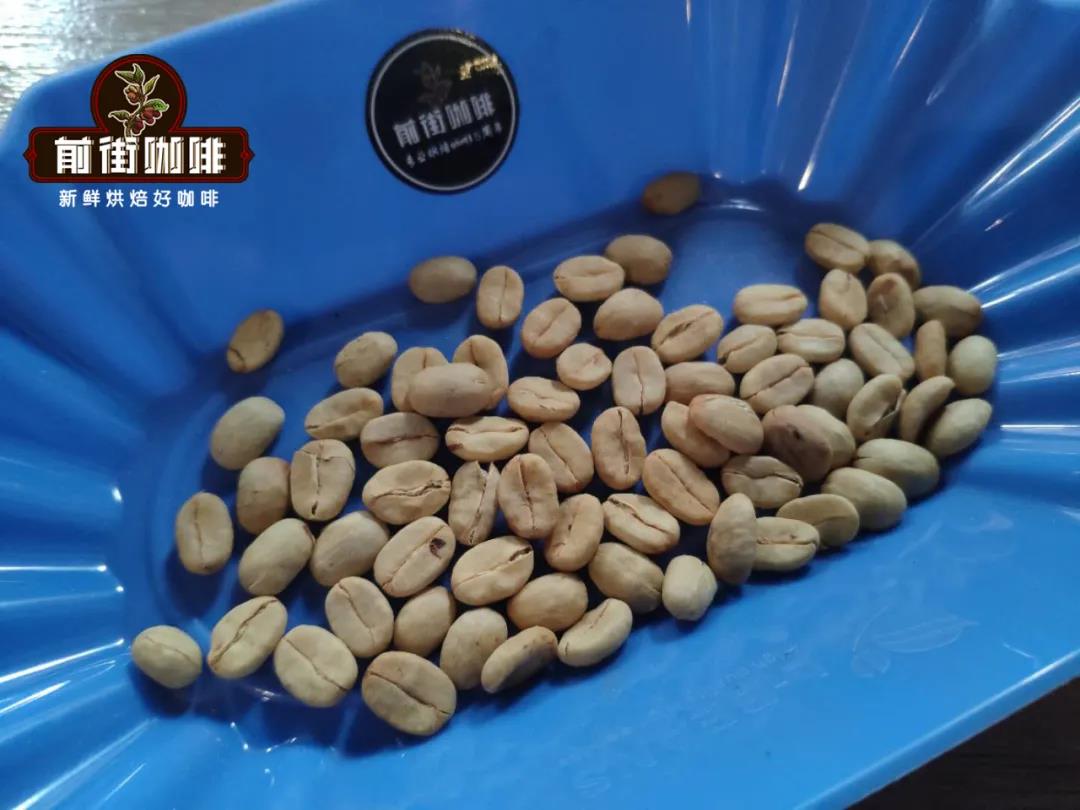
Sprouting: first soak the prepared coffee seeds in 45% warm water for 24 hours, then sow the seeds in medium coarse sand (river sand), add 1-2cm thick coarse sand, and then spread a layer of 3-5cm straw to wet the sand. When the coffee seeds begin to sprout about 20 days after sowing and break the soil in 40-60 days, it is necessary to build a shade with a shading rate of 80%.
Raising seedlings: when the sprouts begin to grow the first pair of leaves, the curry farmers in Qianjie will screen the coffee seedlings and select the high-quality coffee seedlings to be transferred into nutrition bags to raise seedlings.
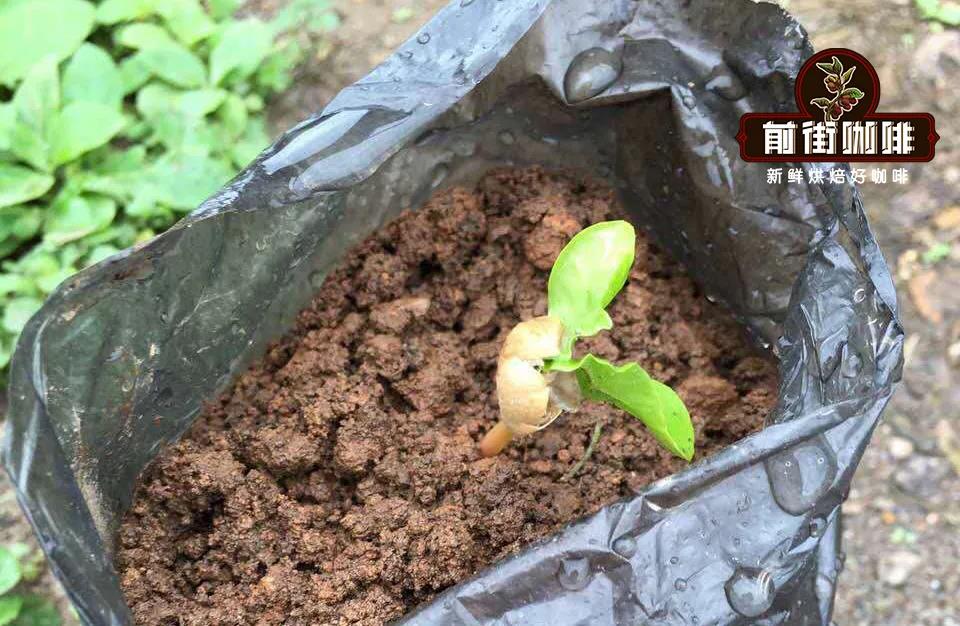
Adult trees: when the seedlings are completed, they will be transplanted to the field for planting. Altitude has a lot to do with the quality of coffee. Qianjie believes that coffee grown in Arabica will be of better quality when planted above 1200 meters. The first and second years of planting of coffee trees are mainly vegetative growth, and the third year and later will begin to blossom and bear fruit.
Flowering: coffee trees bloom on rainy days after the dry season, and the first flowering period of coffee trees is about 3 years old. The flowers are white, growing in clusters in the second branch of the coffee tree, with 5-6 petals. At this time, you can smell the white flowers with a strong fragrance of jasmine. Results: after the coffee flowers withered for a few months, the coffee tree began to bear fruit, and the newly born coffee fruit was bluish. As it matured slowly, the color changed from green to yellow, and then turned red when it was fully ripe.
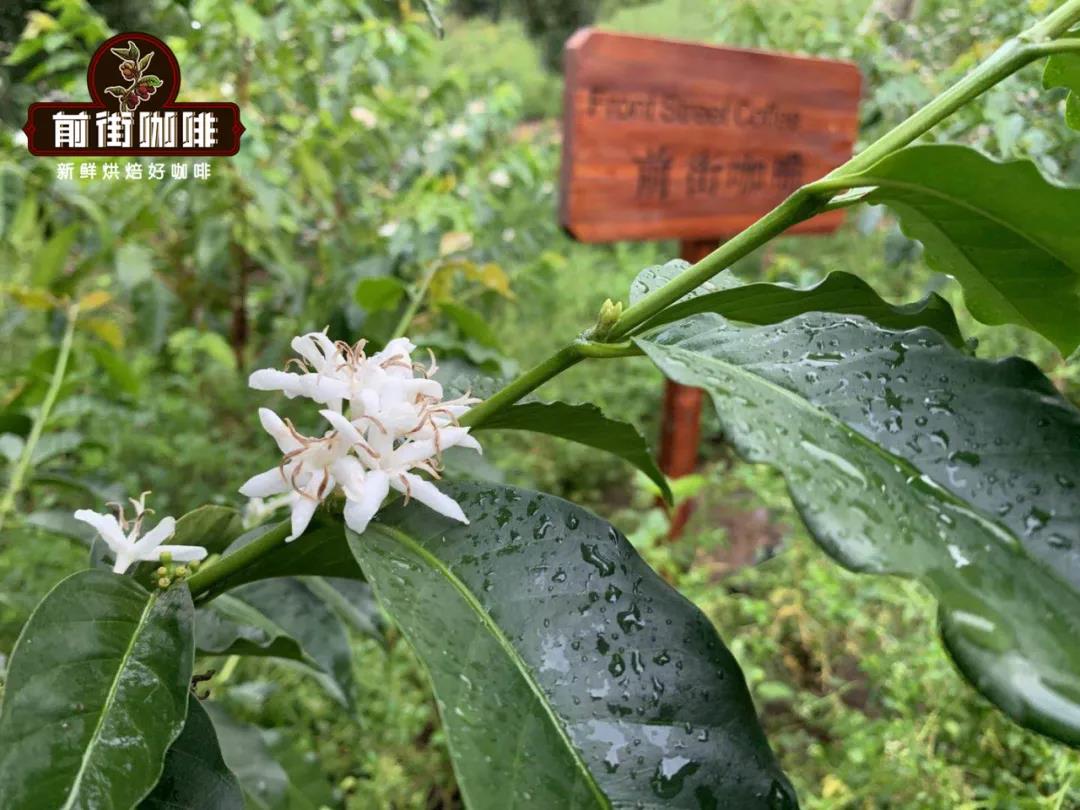
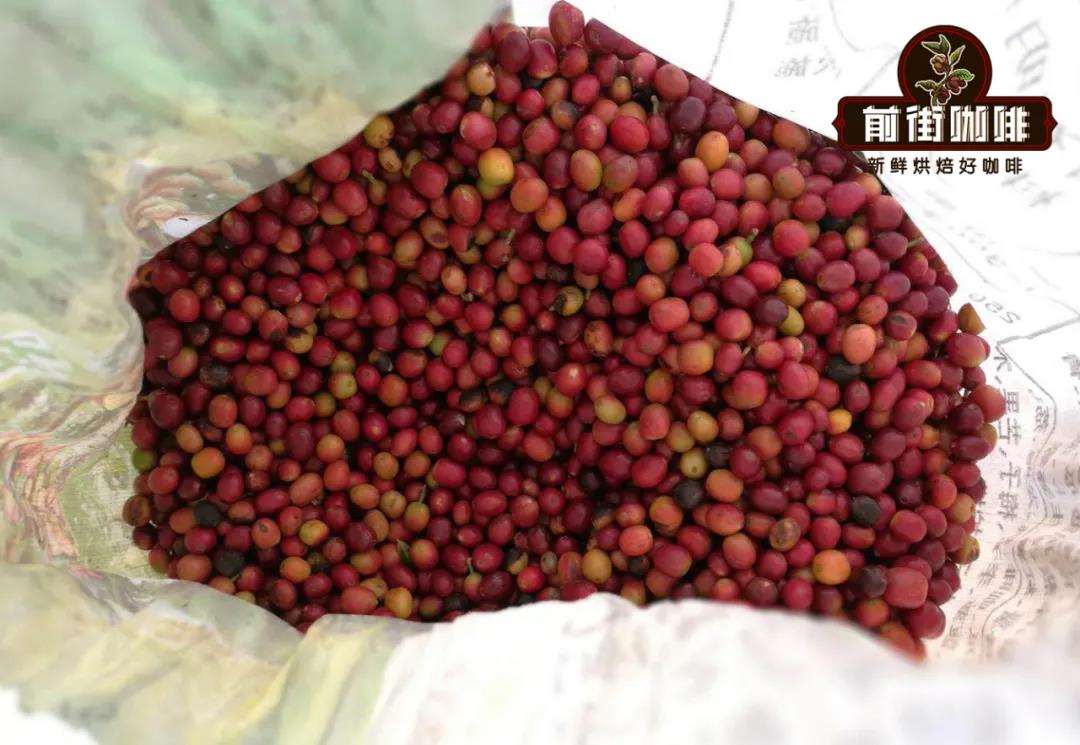
Picking: farmers start picking coffee fruits when they are ripe. The best way to pick coffee fruits is to pick them manually and pick only fully ripe red fruits. It costs a lot of money to train a skilled coffee picker.
As the saying goes, "who knows the rice on the plate, every grain is the hard work of the farmers". Whether it is rice, coffee beans, or other crops, all the planting is carefully cultivated by a group of farmers. so Qianjie is here to remind everyone not to waste all the hard-won food. OK, back to the topic, now the most famous place in the world to grow iron trucks is the Blue Mountains of Jamaica, and then the front street is baked. Cup testing and brewing, let's see how the taste of the Iron pickup Coffee in the Blue Mountains of Jamaica performs.
The Blue Mountains are located in the eastern part of Jamaica, with an elevation of 1000-1700m. The Blue Mountains are located in the coffee growing belt, with fertile volcanic soil, fresh air, no pollution, humid climate, foggy and rainy all the year round (with an average precipitation of 1980 mm and a temperature of about 27 degrees). Only the blue mountain planted in this area is the authentic blue mountain coffee. Blue Mountain Iron Card was transplanted from Martinique to Blue Mountain in Jamaica in the 1820s. After more than 200 years, Blue Mountain Iron pickup has evolved better disease resistance, especially better resistance to fruit rot than ordinary iron pickup. However, the Blue Mountain Ironhide Card cannot replicate its sweet and fragrant characteristics when it steps out of Jamaica.
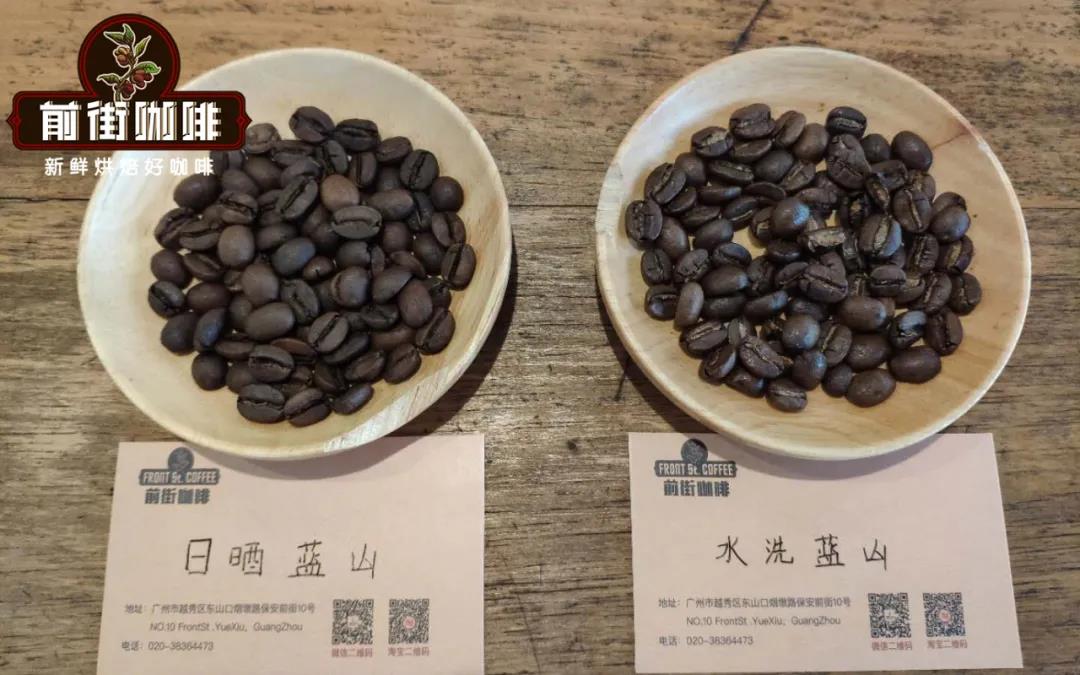
The two Blue Mountain coffees currently on shelves on Qianjie come from Clifton Farm, the only rainforest certified coffee in the Blue Mountain growing area. Until 2019, Blue Mountain Coffee at Clifton Farm used water washing to treat raw coffee beans. During the treatment, first remove the peel and pulp and let it ferment for 18 hours, then put the fermented beans into the pool and pass them back and forth, using the friction of the beans and the power of running water to wash the coffee beans until smooth and clean. After washing, at this time, the coffee beans are still wrapped in the pericarp with a moisture content of 50%. They must be dried to reduce the moisture content to 12-14%, otherwise they will continue to be mellow, moldy and rotten. After that, the coffee beans are screened and stored in a special warehouse.
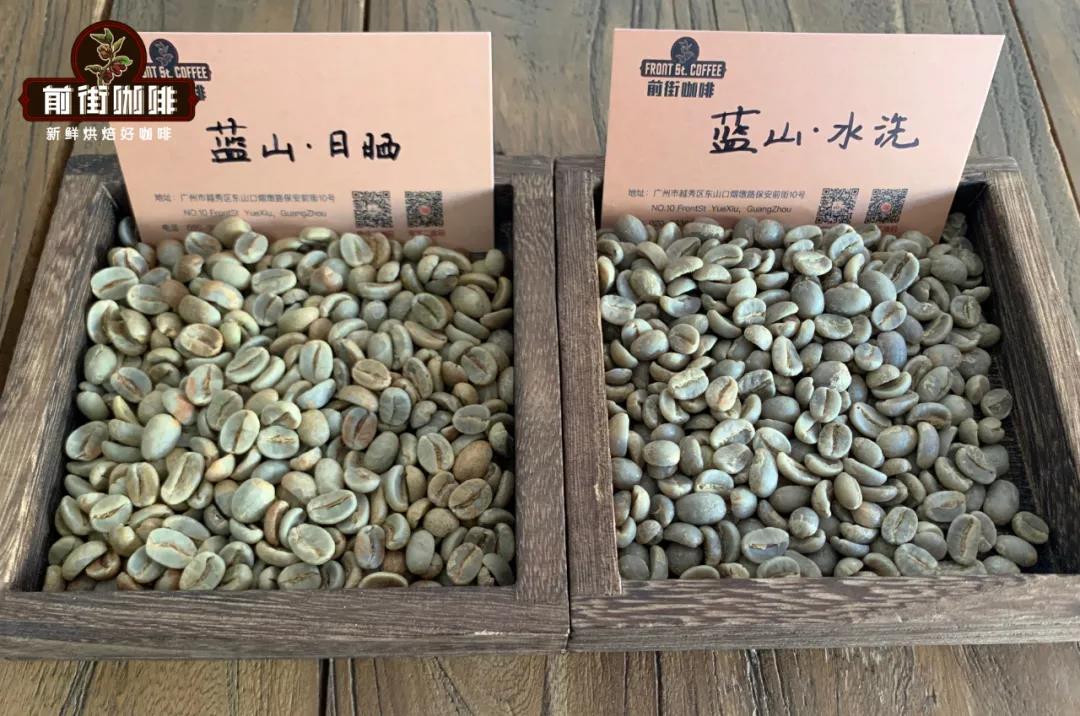
In the new production season in 2020, Clifton Farm launched the blue mountain coffee beans with sun treatment for the first time, which is really novel. Jamaica has a tropical rainforest climate, with the rainy season from May to June and September to November every year, with the most showers in January and May. However, the harvest and treatment season of Jamaican Blue Mountain Coffee is from February to June each year, and half of the time is spent on the rainy season, so it is obviously impractical to use sun treatment. In addition, the quality of traditional sun-treated coffee is unstable, and the quality of coffee depends on the mood of God. In addition, if you want better quality sun treatment, the labor cost is higher than water washing and other treatments. When coffee fruits are dried in the sun, they need to be turned manually every few hours to maintain ventilation, reduce mildew and ensure uniform drying. Such a thankless treatment was even more difficult in Jamaica. Experience of baking Blue Mountain Coffee in Qianjie
Washing Blue Mountain: the furnace temperature is 170 degrees Celsius, the fire power is 140 degrees after the throttle is set for 1 minute, the throttle is unchanged, the temperature is 153 degrees, the bean surface turns yellow, the smell of grass disappears completely, dehydration is completed, the firepower is adjusted to 115 degrees, and the throttle is changed to 4. In the 8th & # 39th minute, ugly wrinkles and black markings appear on the bean surface, and the smell of toast obviously changes to the smell of coffee, which can be defined as a prelude to explosion. at this time, listen clearly to the sound of an explosion point, and start to explode at 8 degrees 39 ". Adjust the firepower to 90 degrees, the throttle is fully open (adjust the firepower to be very careful, not to be so small as to be free of bursting sound), and put the pot at 201.3 degrees.
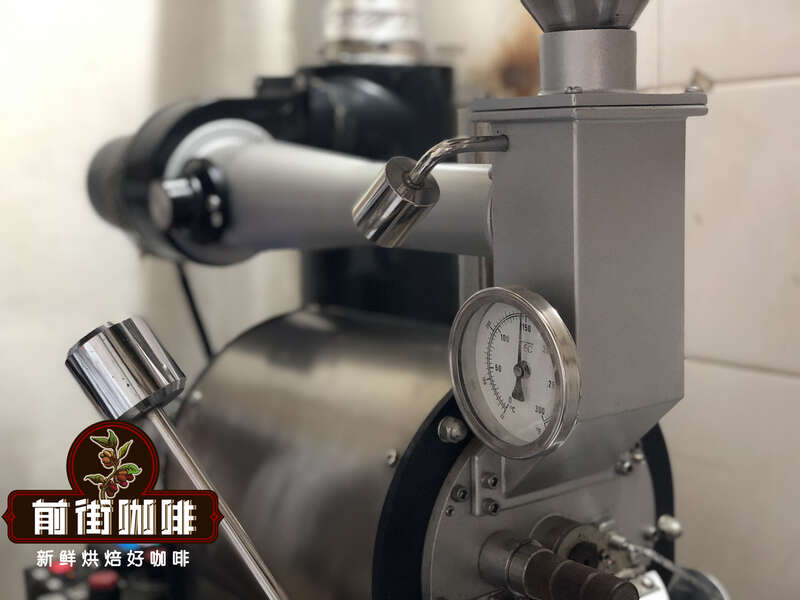
Sun Blue Mountain: furnace temperature 165℃ into the pot, firepower 130C, throttle open 3; temperature recovery point 1pm 391032 ", furnace temperature 95.8℃, firepower unchanged; blower door adjusted to 4min 4min to 140min. When the bean surface turns yellow, the smell of grass disappears completely, and enters the dehydration stage, when the bean surface appears ugly wrinkles and black markings on the bean surface, the smell of toast obviously changes to the smell of coffee, which can be defined as a prelude to an explosion. At this time, it is necessary to listen clearly to the sound of an explosion point, to 10 minutes after the start of an explosion, the development of 3 minutes after an explosion, 198.5 ℃ into the pot. Qianjie Coffee Blue Mountain Coffee Cup Test report
Qianjie Coffee will be tested within 8-24 hours after the sample beans are roasted. Qianjie coffee makers generally use the cup test bowl capacity of 200ml ceramic bowl, which will be marked with 150ml and 200ml scale, according to SCAA standards, the TDS of water is about 150ppm, TDs is too low will easily cause over-extraction, too high will affect the taste and easy to lack of extraction, the cup measured the use of water temperature of 94 °. The cup test grinding degree according to the cup test standard of SCAA, the grinding degree is controlled as 20 standard screen (0.85mm), and the passing rate is 70% Mel 75%. Ratio: 11 grams of coffee powder plus 200 milliliters of hot water, that is, 1VR 18.18, so that the concentration of extraction happens to be within the range of 1.15% Murray 1.35% gold cup, soaking time: 4 minutes. Measurement of washed Blue Mountain Coffee Cup
Dry fragrance: roasted peanuts, hazelnuts, melons, chocolate
Wet fragrance: oolong tea, caramel, honey, chocolate, almonds
Flavor: roasted nuts, chocolate, almonds, melons, honey, sweet and sour balance

Sun Blue Mountain Coffee Cup Test
Dry incense: nuts, wood
Shixiang: caramel
Flavor: berries, plums, mulberries, black cocoa, nuts, slightly fermented
Qianjie Coffee Blue Mountain Coffee suggestion
Filter cup: kono filter cup
Coffee powder: 15g
Ratio of powder to water: 1:15
Water temperature: 88-89 degrees
Degree of grinding: medium and coarse grinding (pass rate of No. 20 standard sieve 75%)
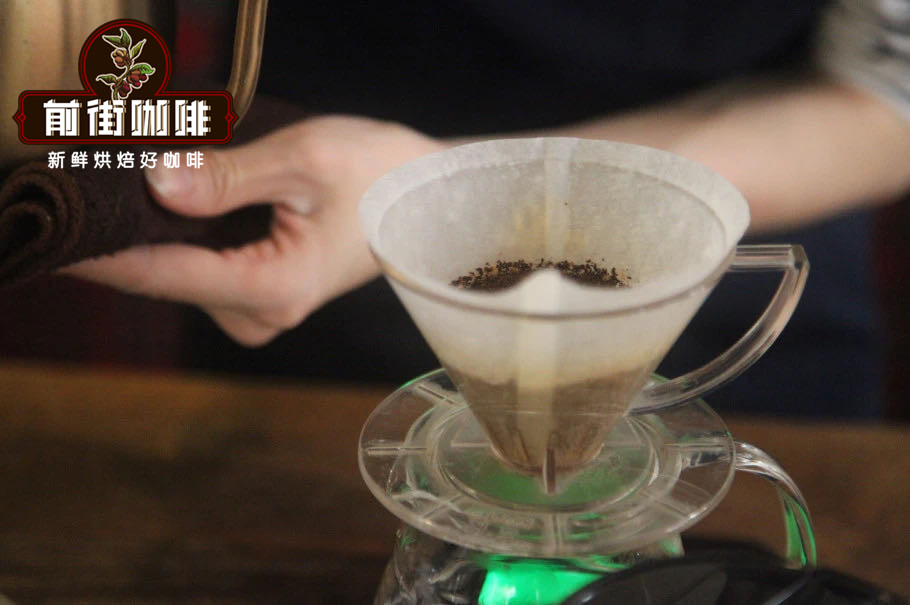
Qianjie cooking technique: the first section is filled with 30 grams of water for 30 seconds, followed by 95 grams (the electronic scale shows about 125 grams), and the injection is completed in about 1 minute. When the water level drops to 2 grams in the powder layer, the remaining 100 grams are injected at 3 places (the electronic scale shows about 225 grams). About 1 minute 40-1 kilogram 39th 45 "second injection is completed. 2: 05"-2 grams 3915 "trickling is completed, remove the filter cup and complete the extraction.
[washed Blue Mountain]: the entrance has dark chocolate, nut flavor, high cleanliness, very bright, good mellow thickness, sweet and sour balance.
[sun Blue Mountain]: the sweetness of brown sugar in the mouth is accompanied by sour berries, with a nutty cocoa flavor in the middle and back, a creamy palate, rich and obvious layers, and a walnut aroma in the finish.
For more boutique coffee beans, please add private Qianjie coffee on Wechat. WeChat account: kaixinguoguo0925
Important Notice :
前街咖啡 FrontStreet Coffee has moved to new addredd:
FrontStreet Coffee Address: 315,Donghua East Road,GuangZhou
Tel:020 38364473
- Prev

Introduction to the inventor of the Origin of Coffee Roaster
The origin of the coffee roaster the inventor introduced 1. The principle of the direct-fired inner pot coffee roaster DISCOVERY to introduce the inner pot after punching processing, the bottom of the burner flame can directly contact the coffee beans. The direct-fire flavor is attached to the coffee and becomes a fragrant and delicious coffee. The flame and heat of the burner are the main heat sources of baking. 2. Semi-hot air inner pot
- Next
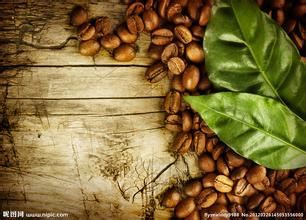
Planting conditions, Environmental yield and quality of Coffee trees
Planting conditions, yield and quality of coffee tree transplanting seedlings: standard of transplanting seedlings: after the seeds are unearthed, the cotyledons have spread to the true leaves and the seedlings have not yet grown, because at this time, the seedlings have begun to work on the first or second round of lateral roots, and the growth is faster after transplanting seedlings, and before transplanting, the sand bed is drenched with water first. When raising seedlings, protect the root system as far as possible, and seedlings should be cut as soon as possible. And pay attention to keep the roots of the seedlings moist. Plant line spacing according to product
Related
- Beginners will see the "Coffee pull flower" guide!
- What is the difference between ice blog purified milk and ordinary milk coffee?
- Why is the Philippines the largest producer of crops in Liberia?
- For coffee extraction, should the fine powder be retained?
- How does extracted espresso fill pressed powder? How much strength does it take to press the powder?
- How to make jasmine cold extract coffee? Is the jasmine + latte good?
- Will this little toy really make the coffee taste better? How does Lily Drip affect coffee extraction?
- Will the action of slapping the filter cup also affect coffee extraction?
- What's the difference between powder-to-water ratio and powder-to-liquid ratio?
- What is the Ethiopian local species? What does it have to do with Heirloom native species?

